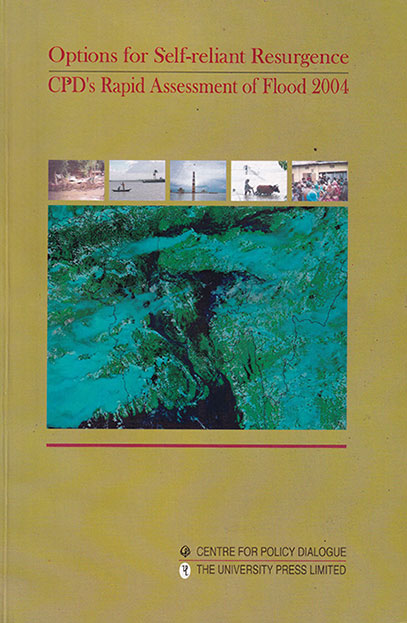- Shop
- Academic & Non-fiction
- Options for Self-reliant Resurgence CPD's Rapid Assessment of Flood 2004
Options for Self-reliant Resurgence CPD's Rapid Assessment of Flood 2004
https://uplbooks.com/shop/9789840517091-options-for-self-reliant-resurgence-cpd-s-rapid-assessment-of-flood-2004-6625 https://uplbooks.com/web/image/product.template/6625/image_1920?unique=56f7a2e
| Language: English |
Tags :
Book Info
The Flood of 2004 in Bangladesh will be remembered because of the rapidity with which it struck and the severity of the damages that it inflicted upon the people and the economy of the country. Addressing the negative fallouts of Flood 2004 continues to remain a concern at the household level in the affected areas as well as for the policy makers and development practitioners. As the flood water was receding in August 2004, the Centre of Policy Dialogue (CPD) launched a Rapid Assessment of Flood 2004. The study was motivated by the need to understand the nature of damages incurred by the economy and the survival strategies adopted by the flood victims. More importantly, this was a timely professional initiative on the part of the country's civil society to articulate a set of public policy interventions towards mitigating the adverse consequences of Flood 2004. CPD's Flood Assessment (2004) will possibly be best remembered for the controversy and debate it generated through an early publication of its "damage estimate," which has been corroborated since then by other independent sources. CPD deployed "triangulation methodology" in estimating the flood damage and its spatial distribution, and for tracing the policy responses of the government and the non-government organisations. The methodology essentially involved analysis of primary data from field survey, knowledge derived from key informant debriefing and secondary information from the official sources and media. The cornerstone of CPD's Rapid Assessment of Flood 2004 is, however, a post-flood public policy package which focuses on macroeconomic management and sectoral measures. The study also provides a budgetary estimate indicating that Bangladesh is capable of financing a large part of the anticipated rehabilitation costs from domestic sources. This study is expected to remain as an enduring contribution to the literature on flood and development studies in the context of Bangladesh.




